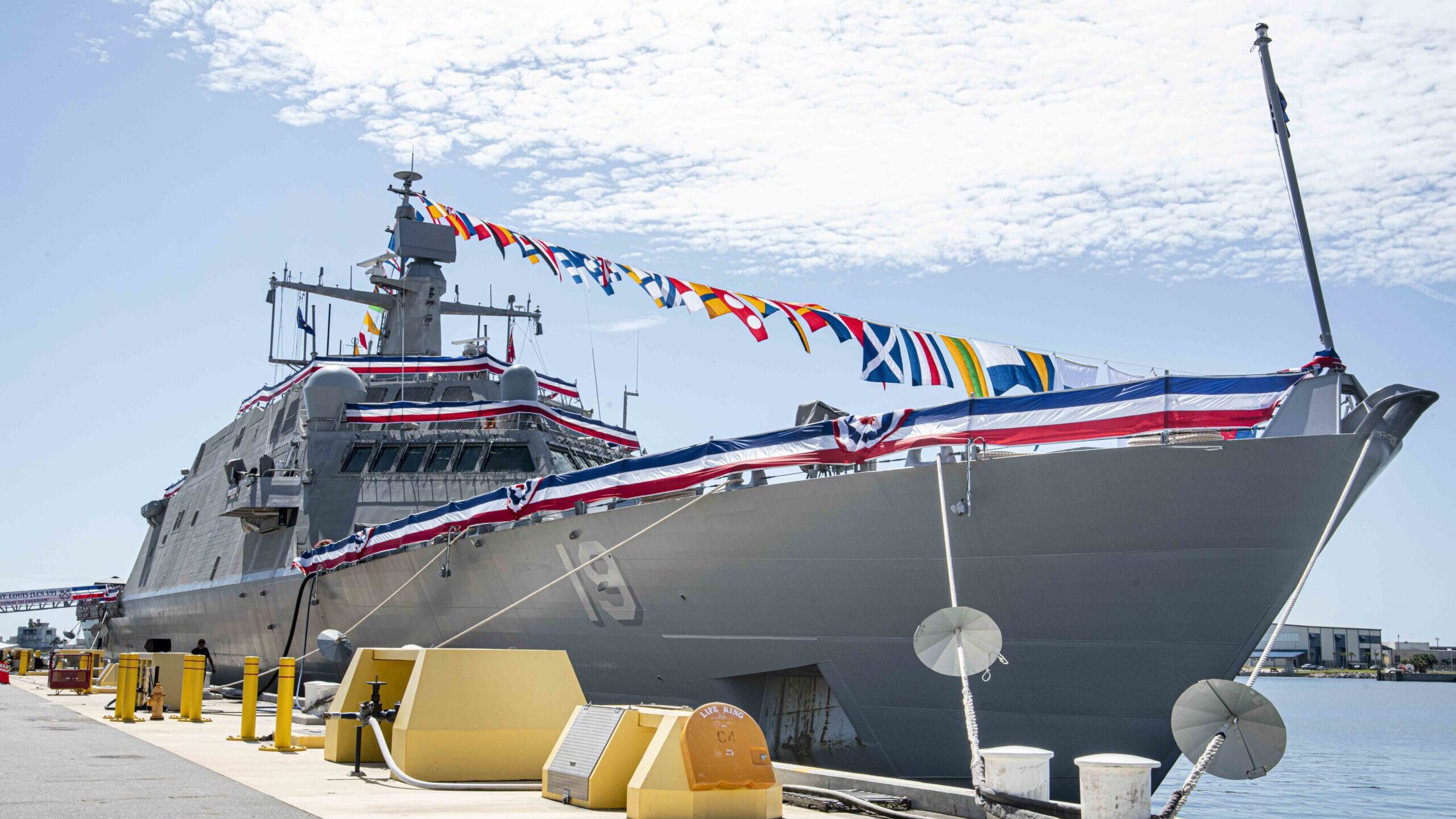
The Freedom-class littoral combat ship St. Louis (LCS-19) flies ceremonious flags during its commissioning at Naval Station Mayport. (U.S. Navy photo by Mass Communication Specialist 2nd Class Alana Langdon/Released)
WASHINGTON: The littoral combat ship St. Louis (LCS-19) is currently undergoing a maintenance availability where it will receive the fix to a class-wide problem discovered in the vessel’s combining gear.
That wouldn’t be very noteworthy except for one thing: The ship is on the Navy’s list of vessels it wants to decommission in fiscal 2023. So why spend time and money to fix a ship ostensibly headed for its exit from service?
Navy spokesperson Jamie Koehler said it’s because the repairs were “commenced as part of the new construction funded post-shakedown availability, prior to final decisions regarding planned decommissioning as part of the 2023 president’s budget” and noted that the repair is expected to be completed by December 2022. Further, the repairs “will allow unrestricted operations on LCS-19 prior to decommissioning and placement in out of commission, in reserve (OCIR) status,” Koehler told Breaking Defense.
Between the lines, though, the choice of whether to fix a ship is more complicated than simply a matter of if it is up for decommissioning — and the St. Louis might not really be going anywhere.
St. Louis is the only LCS currently receiving the combining gear fix, but it’s far from the only LCS up for decommissioning. For years, the service has proposed mothballing certain LCSs for any number of reasons. To justify decommissioning the nine included in this year’s budget request, the service has problems with the anti-submarine warfare mission module package as well as a desire to use the money elsewhere, such as resupplying its missile stockpiles.
And for years Congress has pushed back, arguing the money is spent, the fleet is already smaller than statutorily mandated and, as problematic as the LCSs have been, they can still serve a purpose. Lawmakers in previous years have compromised with Navy brass, allowing a limited number of vessels to leave the fleet, but have rarely obliged the service’s requests in full. This year is not looking any different.
“The LCS has not been a platform that has achieved its goal. We all know that,” Rep. Elaine Luria, D-Va., told Breaking Defense in an interview last month. “But it is a platform that can do low-end missions. So if you get rid of the LCSs, what are you going to replace them [with]? Are you then going to need a DDG to go do every one of those ops, or are those ops not going to happen?”
RELATED: Don’t scrap LCS now that they’re finally useful, Luria says
Koehler said the fix to the defect, which was discovered on all Freedom-class LCS in late 2020, has been implemented on both LCS-21 and LCS-23. Lockheed Martin included the fix already incorporated into LCS-31 before delivering that vessel.
Navy brass during congressional hearings last week acknowledged LCSs that have not received the fix, such as the Sioux City (LCS-11), can be deployed but are restricted in their operations. It’s an interesting admission because it shows the service has figured out how to work around the troubled combining gear. If the Navy becomes stuck between declining budgets and lawmakers unwilling to allow more LCSs to be retired, then which ships get the fix and which don’t could come down to an internal budget fight.
In the meantime, as one of the youngest ships on the Navy’s proposed retirement list, it won’t be a surprise if lawmakers force the Navy to keep the St. Louis in service for many years to come.
GD chief says Navy’s 1 sub buy won’t impact company short term, but out years less certain
The comments from the General Dynamics chief come on the same day President Joe Biden signed the national security supplemental, which includes billions for the sub industrial base.



























